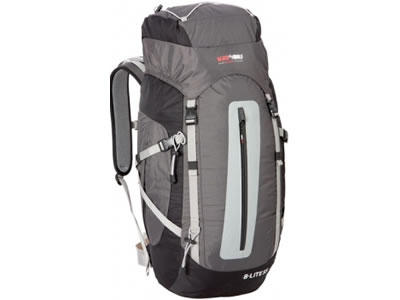OK, saving weight on your back. Where to start?
The conventional wisdom is that you start with the big three (or four) - tent, backpack, sleeping bag (the three) and sleeping mat (the fourth). These four pieces often make up a half or more of your total carried weight, so savings here have large effects on the total. Straight away, you can see the obvious issues ie. that there will always be a compromise between weight and comfort/utility, eg. a bivvy bag will be lighter than a 1 man tent, but provides less space and function, especially in adverse weather. Similarly, sleeping bags trade weight for warmth, and sleeping mats weight for comfort. Backpacks have a trade-off between weight and volume.
So decisions must be made about the level of comfort/utility that is the minimum for an enjoyable and safe trip, withregard given to expected weather and terrain, length of hike and difficulty, age and fitness of the hiker, goals and expectations, levels of acceptable risk, and so on.
So here we see clearly that there is no "one size fits all" solution, but in fact a matrix of possibilities that individuals must resolve themselves.
So first, a backpack idea.
In my twenties and thirties, I did a lot of travelling around the world, usually on extended skiing adventures to Canada, Switzerland, the States, New Zealand and, of course, Australia. In those days I needed a big luggage system that could carry all the clothes, ski accessories, camping equipment and other paraphernalia I needed for three - six month sojourns, so I used a big (85 or 90 litre) Lowe Expedition which I picked up on sale in Canada. It was fantastic - the simple design just swallowed gear, and the cordura material was tough as corrugated iron.
The great thing about the pack was I could fill it up with my travelling stuff flying out of Sydney - it worked great as airline luggage; at my destination, I could walk to the hostel through town with the thing comfortably on my back; and in the second half of the season. it served triple duty for backcountry ski touring, as well as below snow-line camping. I trekked for three weeks in the Himalayas with it, getting to 5,400 metres and camping in -20 degrees Celsius. It was versatile, reliable and trustworthy. I actually still have it in my cupboard - it's over 30 years old and still functional.
At the time, I did not know how much it weighed - as a fit guy in his twenties, I just threw it on, regardless of weight, taking pride in how much I could carry. (It was 2.6kg) Today, different story. In my efforts to minimise weight I've realised there are great savings to be made by carefully monitoring weight, and packs are at the lead in savings.
Case in point - forthe last few years I'd been using a 65 litre Katmandu pack, which was fairly tough, comfortable, with two main compartments and a lid pocket, extension straps on the lid for extra volume, a very supportive harness and so on. Nothing wrong with it functionally, everything like zippers and straps all work fine, no issues with the pack.
3.2 kg.
About a year ago, doing some research on lighter packs, I discovered the Black Wolf B-lite, a 55 litre pack, 1 compartment, 1 lid and two side pockets, two aluminium stays as a basic frame, unpadded waist belt, no harness length adjustment, but still quite comfortable.
Under 900 grams
Under $90
I've been using this for about a year, and am quite chuffed with it. It's definitely not as rugged or abrasion resistant as the Kathmandu or other name-brand packs, and of course it's smaller than most packs people would use, but for my mostly fire-trail and open track walks, it's fine. And losing the 10 to 15 litres in volume is easy if you go down the same "light and small" path with tent and other gear.
It does have what I consider a fairly pointless zipper that provides access to the main compartment - without it you'd have an even lighter pack with less risk of failure and leakage. The other possible weaknesses are that the stitching of the shoulder straps and other attachment points may be less than robust - there is a haulage strap on the top which I've slightly stretched the stitches on - and of course, the non-adjustable harness limits this pack to people between around 160 - 185 cm tall. Its small volume, potentially vulnerable attachment points, and un-padded waist belt limits the capacity to around 12 or 13kg, above which you can feel it struggling to manage the load.
But for my purposes, it's done everything I've expected of it, has been comfortable and functional, and at the price I'd be content if it had only half the life-span of heavier/dearer packs. At this stage, though, I think I'm going to get at least 100 days use out of it (I hike around 40 - 50 days per year), so I'm more than happy with that.
So, by spending $90 I've saved more than 2kg of load - that's some of the best value for money you'll get in the pursuit of the portable backpack. Of course, there are other lightweight packs you should also research as well - the Osprey Exos, for example - and you may decide that the Black Wolf does not have all the features you may require - volume, ruggedness, adjustable harness - but it's definitely worth a look.
Skibug

Definitely will be referring to this page again soon when packing for the next expedition! Thanks! :) LJK
ReplyDelete